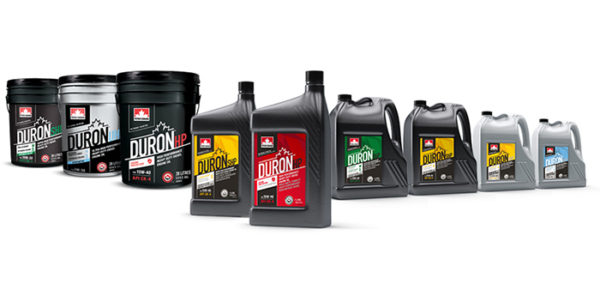Continually investing in fleet maintenance is a key priority for any fleet owner or owner-operator, and implementing an effective used oil analysis program can be a key component, as there are numerous benefits to doing so. A good program can reduce unscheduled downtime, improve equipment reliability, extend equipment life, optimize oil change intervals and reduce maintenance costs. It is important fleet owners understand how this testing works and how it fits into the other requirements of fleet maintenance.
Why is it required?
As part of a sound maintenance regime, a good used oil analysis program is a cost-effective tool that can monitor oil condition in gasoline, diesel, propane and compressed natural gas fueled engines, automotive transmissions and final drives, industrial compressors and gearboxes—as well as hydraulic fluid and circulating oil systems. By evaluating the condition of your lubricant and equipment on a routine basis, minor mechanical problems are discovered before they become serious and expensive to fix.
In truck fleets, oil analysis can help you identify ingested contaminants such as dust, dirt and water, as well as system contaminants like fuel, glycol (coolant) and soot, which can all lead to increased wear or even a catastrophic equipment failure. Testing can detect these impurities and measure their concentration, showing you how and why your machinery is wearing and help to identify the source(s) of contamination. If a fleet owner wants to extend their drain intervals, it is imperative that they implement a used oil analysis program.
What does oil analysis testing involve?
Oil analysis typically involves three basic steps – taking a representative sample from the equipment you are interested in, sending the sample to a qualified used oil analysis lab in an expedient manner, and interpreting/acting on the results. Oil analysis is most effective when performed at regular intervals so that a trend can be generated which is used to improve performance and efficiency of your equipment.
An explanation of each step is below:
- Taking a Representative Sample: This is the most important step in the process as improper sampling can lead to inaccurate interpretation of the results and potential equipment damage or failure. A clean, dry container suitable for holding used oil should be used. A label must be affixed to the container that has all the necessary information for the lab to put into their database (fluid name, equipment type, hours/miles of operation, etc). The laboratory will normally have sample bottles and labels that you can order and even on-line registration of samples. When taking a sample, the sampling point should be wiped with a rag and a small amount of oil should be flushed first to ensure no foreign contamination make their way into the bottle.
- Qualified Used Oil Analysis Laboratories: Once the sample has been taken, it should be sent as soon as possible to an oil analysis lab certified to perform the testing required. In some cases, delays can mean the difference in being able to diagnose and correct a serious condition, and losing a critical piece of equipment due to failure. The lab will test the oil using standard test regimes, providing accurate results and diagnosis in a report that can be sent to you by email or you can typically view the results online. Acting quickly on a properly diagnosed coolant leak before an engine fails catastrophically often pays for the testing program for the entire fleet for an entire year!
- Interpreting Used Oil Analysis Results: While results will still be sent by email if requested, many oil analysis labs also supply online software for storing, trending and assisting in interpreting the oil sample results. To interpret the results for your equipment it is key to have guidelines for what levels are normal for your type of machine and how it operates. Looking at the trends over time for each parameter can offer more information than absolute single values. As well, the component OEMs have general guidelines for maximum values for the safe operation of their equipment. As a starting point, the lab software can identify results that fall outside these guidelines.
When it comes to oil analysis, experts like the Technical Services Advisors group at Petro-Canada Lubricants can also be a great assistance. Not only can we provide fleets with instructions on how to take representative samples and recommend certified labs, but our experts can help with the data interpretation to ensure your equipment operates at its best.
How can it benefit your operations?
Oil analysis can help improve two important considerations faced by fleet owners: fleet efficiency and fuel consumption. In December 2016, the industry welcomed the introduction of the API CK-4/FA-4 heavy duty diesel engine oil categories which aimed to address these challenges. The new oils are the culmination of considerable research and coupled with a good used oil analysis program, offer the opportunity for fewer regular oil changes, extended drain potential, and can provide engine protection for longer periods. In turn, these factors can contribute to provide improved fuel economy.
Overall, oil analysis testing will have an important role in monitoring and measuring the performance of these oils and their effect on the various engine components which they come into contact with. As part of the API CK-4/FA-4 launch, Petro-Canada Lubricants launched the Duron Next Generation product line, the most advanced, durable high performance oils we’ve ever made. You can learn more information on this line of products here.
If you are considering oil analysis for your fleet, we highly recommend it as a worthwhile investment. The benefits it can bring in terms of reducing maintenance expense and vehicle downtime far outweigh the incremental cost. Consistent sampling and testing can provide a valuable layer of knowledge to help form your lubrication management strategy.
This article was contributed by Brian Humphrey, OEM technical liaison for Petro-Canada Lubricants.














